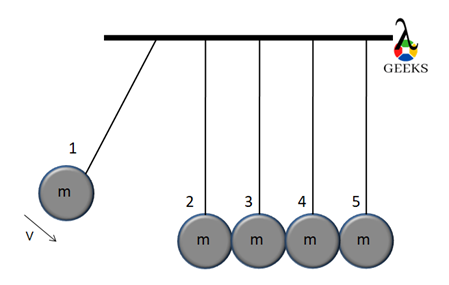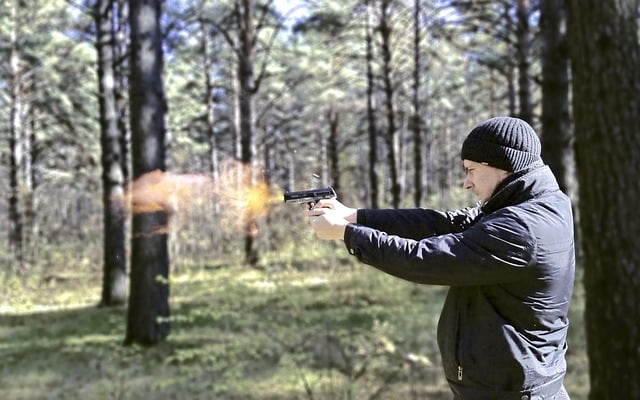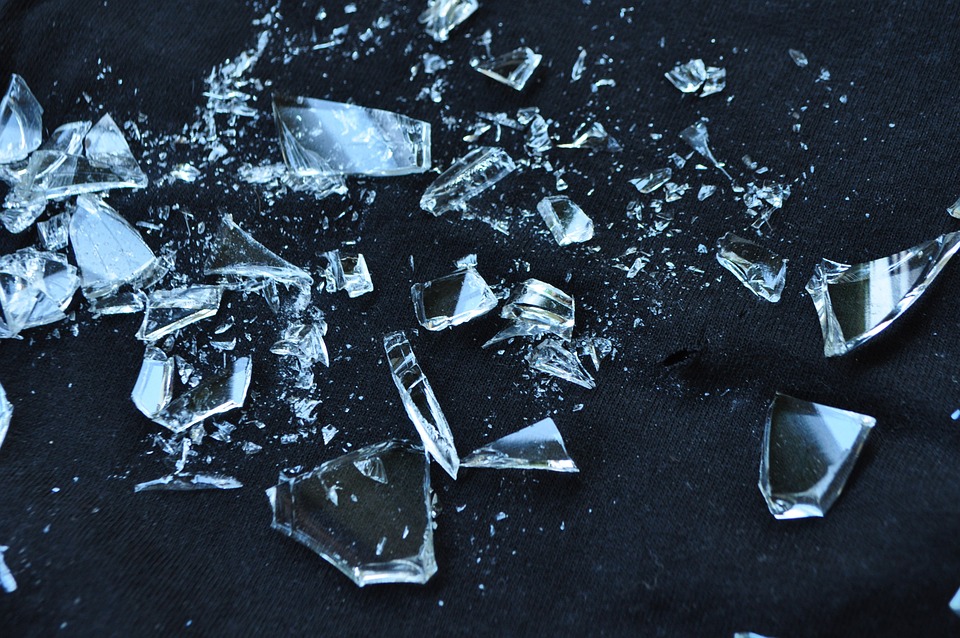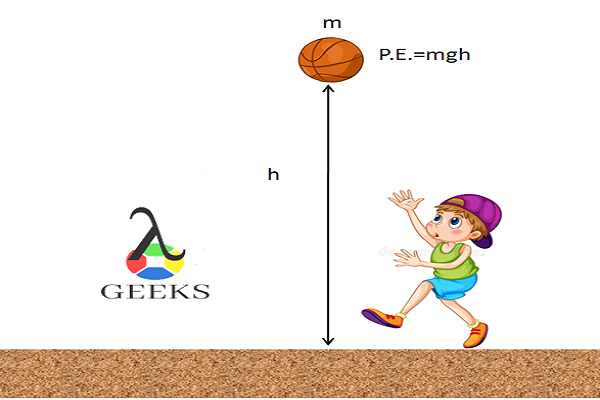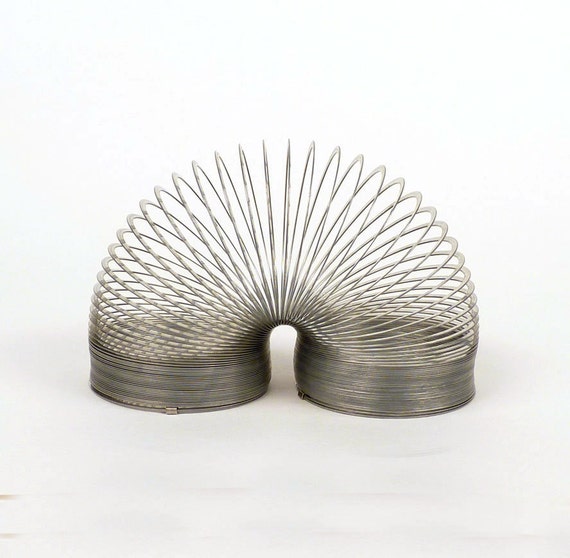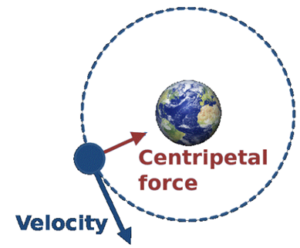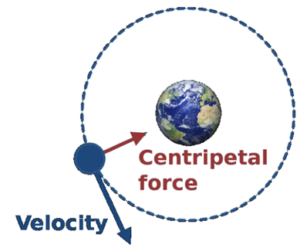In a perfectly elastic collision, two objects collide and rebound without loss of kinetic energy. Example: two identical billiard balls striking at equal speeds; they exchange velocities while conserving total kinetic energy and momentum. Pre-collision velocity of ball A (1 m/s) equals post-collision velocity of ball B, and vice versa, assuming no external forces or rotational effects.
Ping-pong ball
A ping pong ball bounces conserving its kinetic energy and momentum on every bounce. The more the potential energy is given to the ping pong ball, the more it will attain the height on the bounce by converting all the potential energy into kinetic energy while approaching the ground surface due to the gravitational force pulling it downward. This will create an impact on the ground and the ball will bounce up vertically in the air stream.
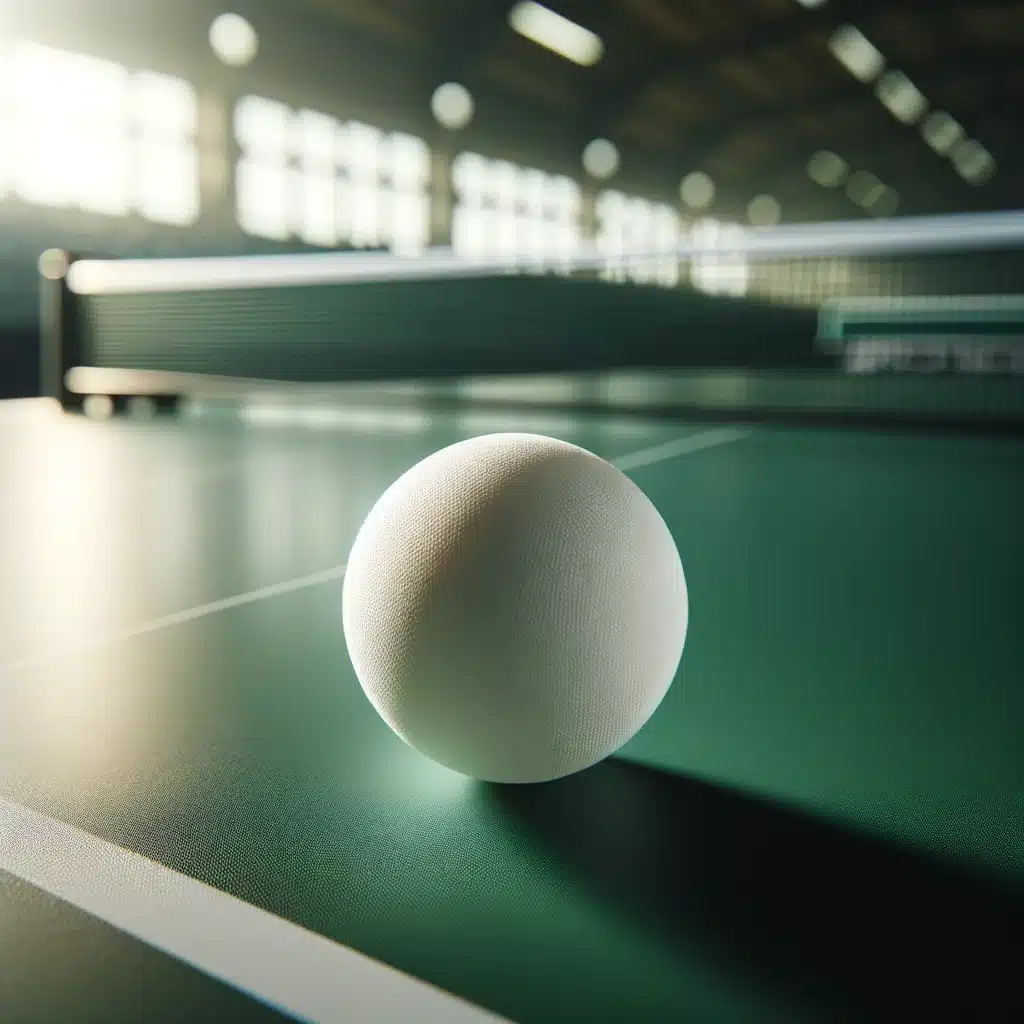
The gravitational force acting downward is equal to the force due to the air stream upward. The kinetic energy of the ball, the momentum, and the height up to which the ball is bouncing is governed by the potential energy of the ball and the decrease in the static pressure.
Moreover, a ping pong ball is light in weight and springy, it loses only a small amount of kinetic energy due to the less frictional force experienced. Hence, the kinetic energy and momentum, both are conserved by the bouncing ping pong ball.
Hitting the Marbles
Marble is associated with the potential energy on lifting it to a certain height. This potential energy is converted into kinetic energy which is the energy of motion.

Image Credit: pixabay
The kinetic energy is released on hitting the marble kept stable at the center. Upon striking, the kinetic energy of the marble released is transferred to the marble on the ground and it displaces with the amount of kinetic energy it receives.
Newton’s Cradle
Newton’s cradle is a perfect example of elastic collision as it conserves both momentum and energy. The bobs hanging on the cradle with a string of equal length consist of equal masses. Usually, Newton’s cradle comes with five bobs.
When one bob from the corner is given momentum, it transfers the energy in the form of potential energy and released back the energy by swinging the bob at the end of the row in the air and again passing the potential energy to the bobs at the middle. Thus conserving the energy once given to the cradle and momentum of the bobs is also conserved.

For a collision of the bobs to be perfectly elastic, the momentum and the energy associated with the bobs must be the same even after the collision and this can be formulated for the Newton’s cradle in the equation below:

Since, m1=m2=m3=m4=m5=m and there is kinetic energy associated with the bobs 2,3 and 4 the velocity of bob 2-4 is equal to zero. And the initial velocity of bob 5 is zero and after the collision, the velocity of bob 1 becomes zero.
Therefore,
mu1=mv5
The momentum and the kinetic energy of bob 1 & bob 5 are the same, as it is conserved by the bob in the middle of them both.
Collision of Billiard Balls
On targeting a billiard ball with a billiard stick, the kinetic energy is given to the ball due to which it starts accelerating and collides with the target ball. On colliding, the kinetic energy is transferred to the target ball and is directed towards the pocket.
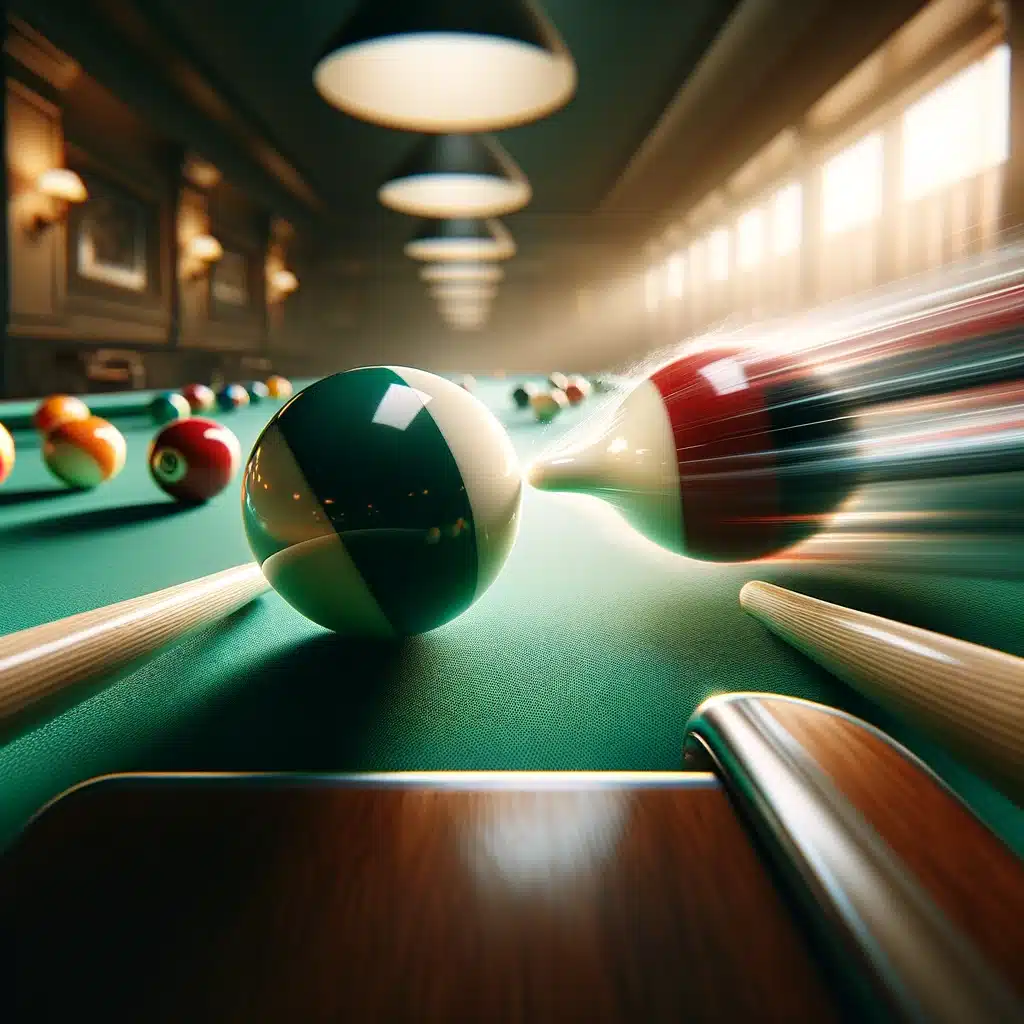
Carrom
When the striker strikes the carrommen, the kinetic energy and momentum of the striker are transferred to the carrommen. On gaining the kinetic energy, the carrommen travels further towards the net hole of the carom board.
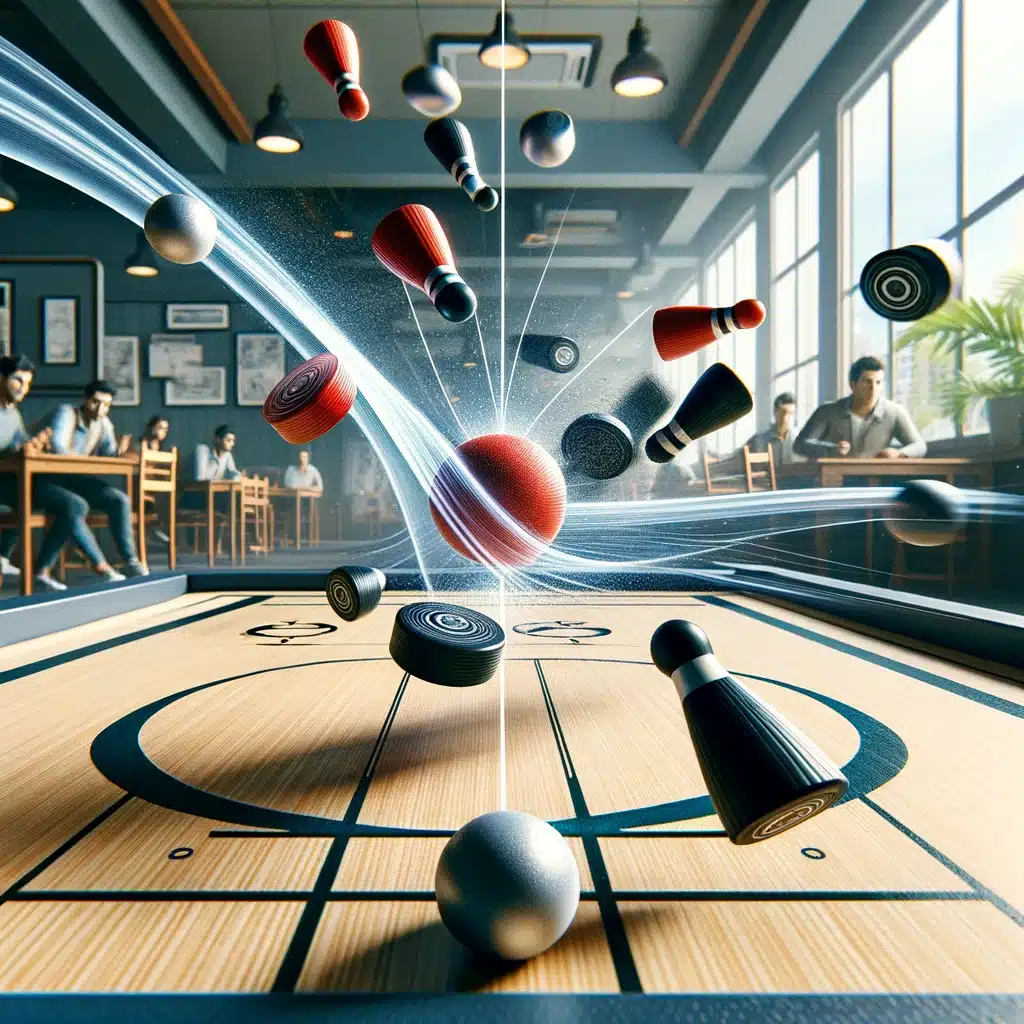
Compton Scattering
This is an example of a collision of photons with a stable charged particle. A photon approaching from infinity strikes the charged particle possessing energy:-
Ephoton=hc/λ
On colliding with the charged particle the kinetic energy of the photon is transferred to the charged particle which is then recoiled by the particle and the remaining energy is scattered by the particle releasing out the photon.
The change in the wavelength of the photon before and after colliding is given by the equation:-

The momentum and energy of the photon is conserved in this collision, hence it is an elastic collision.
Trampoline
A person jumping on a trampoline gains potential energy due to the elasticity of the trampoline which throws the body into the air converting this potential energy into the kinetic energy that sets the body in motion.
This kinetic energy is converted back into the potential energy when the body attains the height where all the kinetic energy is converted into the potential energy and hence there is a pause for some milliseconds in the air before the body starts returning down due to the effect of gravity.
The energy of the body and the momentum is conserved while jumping on the trampoline, hence is an example of perfectly elastic collision.
Air Bags
Molecules in air move in random motions due to the wide separation between them. As the temperature of the system increases the agility of the molecules in the air increases and there are more chances of collision due to the randomness in motion of the molecules.
These molecules bombard with each other in the air, releasing and gaining an equal amount of energy depending upon the molecular masses, and get scattered maintaining an equivalent measure of kinetic energy and momentum that was before the collision of the molecules.
Read more on 15+ Elastic Collision Examples: Detailed Facts And FAQs.
Frequently Asked Questions
What is a perfectly elastic collision?
If a particle on colliding retains its kinetic energy and momentum then it is called an elastic collision.
In a perfectly elastic collision, the kinetic energy and the momentum of the particle do not change after a collision.
Does the kinetic energy change after collision in a perfectly elastic collision?
No, it does not change after the collision in a perfectly elastic collision.
The kinetic energy does not transform into any other form of energy and no kinetic energy is lost in the collision.
How elastic collision is different from perfectly elastic collision?
Both types of collision are elastic collisions hence we know that the kinetic energy, as well as the momentum, is conserved in the process.
But in the case of perfectly elastic collision, there is no loss in the kinetic energy at all; so is not the case in an elastic collision.
How can you minimize the force acting on the object during the collision?
The less the kinetic energy the object, the smaller will be the impact of the object during the collision.
A force can be minimized by lowering the time required for the collision of the object that is by reducing the velocity of the object.
- 29 Example Of Law Of Conservation Of Mass: Detailed Explanations
- 7 Hydrophilic Examples: Detailed Facts You Should Know!
- 31+ Nuclear Energy Examples: Detailed Facts
- 13 Longitudinal Wave Example: Detailed Explanations
- How To Reverse Drill Direction: The Science Behind It
- Do A Hammer Drill Spin: Why, How To Fix (The Science Behind!)
Also Read:
